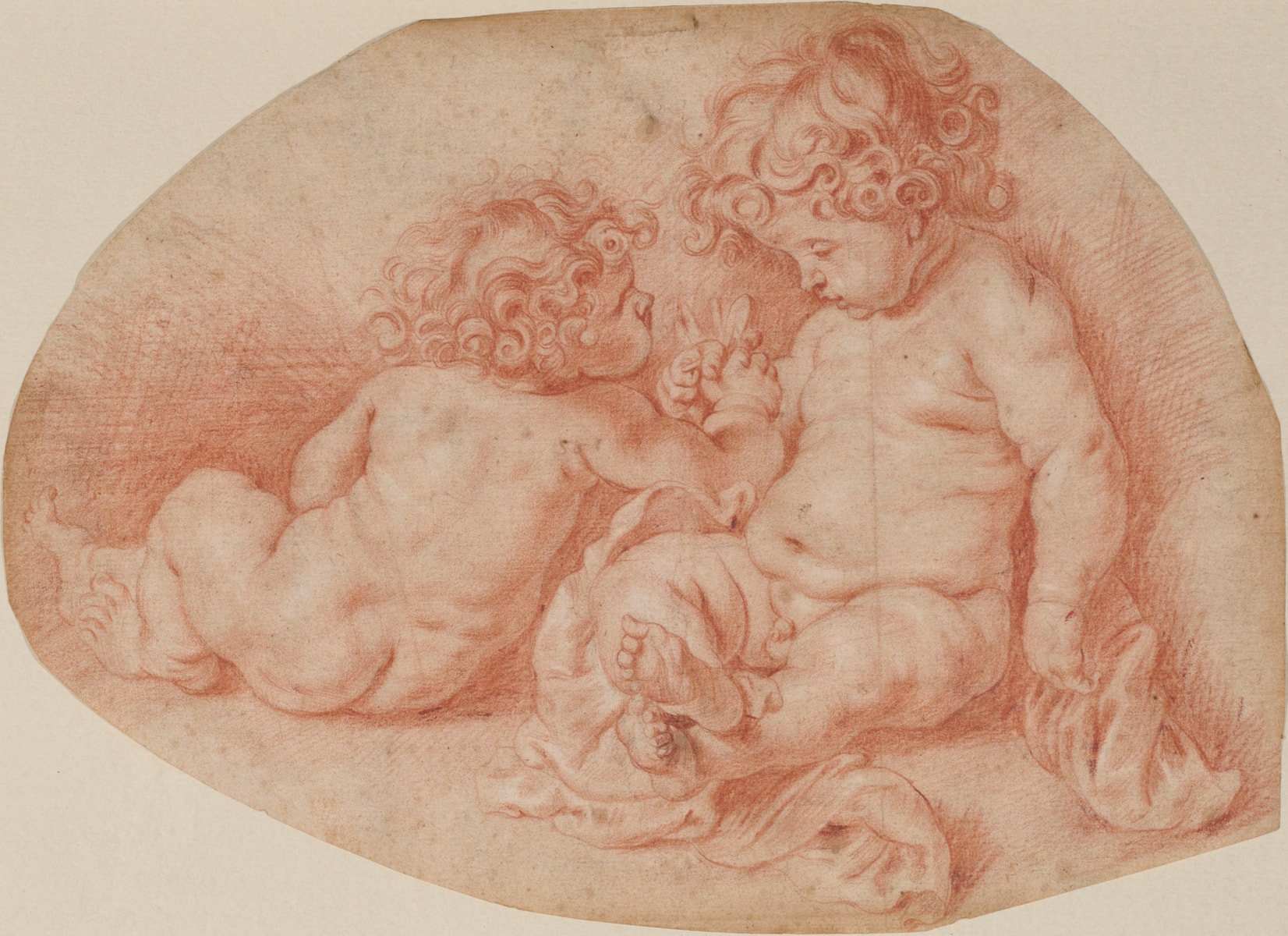
Willem Panneels (Aachen (?) c. 1600 - Baden Baden 1634)
Romulus and Remus
Description:
inscribed by Panneels with 'Rubens’ cantoor' number (verso): 221; inscribed (verso): M; inscribed (verso): P. Rubens; inscribed (verso): f2
red chalk, heightened with white (ovoid sheet)
215 x 300 mm
Provenance:
Willem Panneels – ‘Rubens’ cantoor’
Eldo Netto (1927-2024), New York
Note:
This fascinating, unpublished drawing is an archetypal illustration of the working method and graphic style of the little-known Flemish artist Willem Panneels. The drawing depicts Romulus and Remus, the founders of Rome, as infants passing a flower between them, and likely provides a record of a lost drawing by Panneels’ master, Peter Paul Rubens. The figurative group is derived from a colossal Roman marble, The River Tiber with Romulus and Remus, which is now at the Musée du Louvre but was copied by Rubens circa 1606 while in its former location at Rome, in the Cortile Belvedere. Rubens recommended the figurative group in his theoretical notebook as a perfect example of children’s figures. Variations on the theme feature in no less than two further drawings, five paintings, and two oil sketches all of which are attributed to Rubens or to his workshop. This reuse of the same figurative group would suggest that the workshop relied on a common model by the hand of the master. Panneels, as a trusted studio assistant, had access to this drawing and thus produced the present work as a record to store within his own visual archive, the so-called ‘Rubens’ cantoor’.
Recently discovered, this drawing once belonged to a celebrated group of drawings by Panneels, known as the ‘Rubens’ cantoor’. What remains of this group of drawings is now held at the Statens Museum for Kunst in Copenhagen and comprises some 463 sheets. These drawings are predominately executed in red or black chalks and date to the mid-to-late 1620s. The sheets comprise of copies after works by Rubens, Anthony Van Dyck, and the works in Rubens’ own cantoor: a physical repository akin to an archive, in which drawings, sketches and modelli were kept. Ambiguity concerning the group’s origins and attribution gave rise to the somewhat misleading appellation, ‘Rubens’ cantoor’, in the 19th century. The numbers inscribed on many of the ‘Rubens’ cantoor’ drawings indicate that the surviving sheets constitute as little as a quarter of Panneels’ original archive. In spite of these evident losses, the present drawing is extremely rare as it represents one of the only known survivals outside of the principal group in Copenhagen.
Please contact us for a full catalogue entry.
